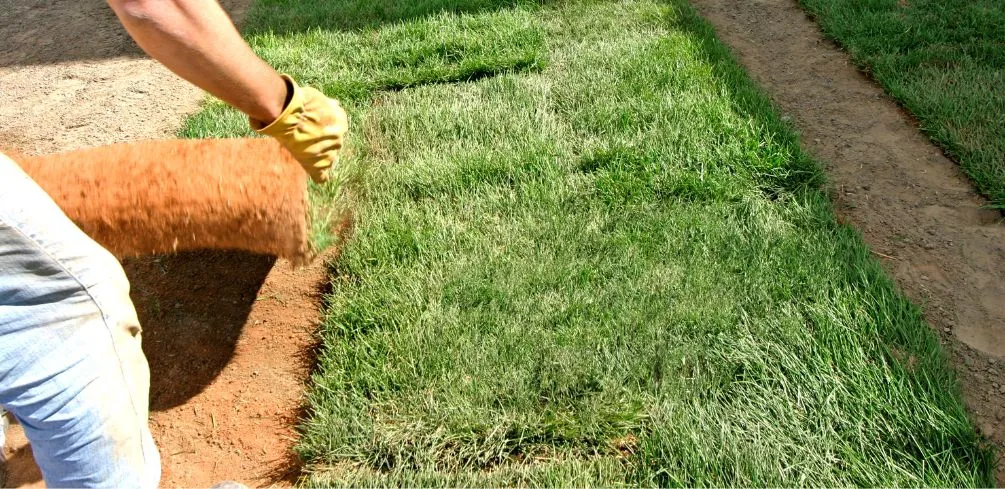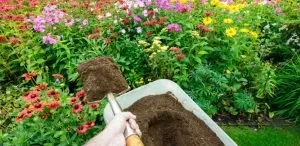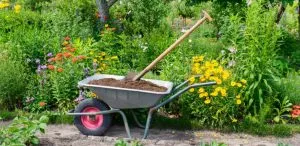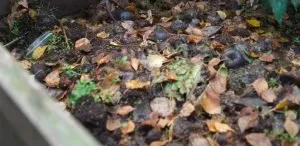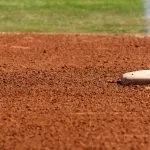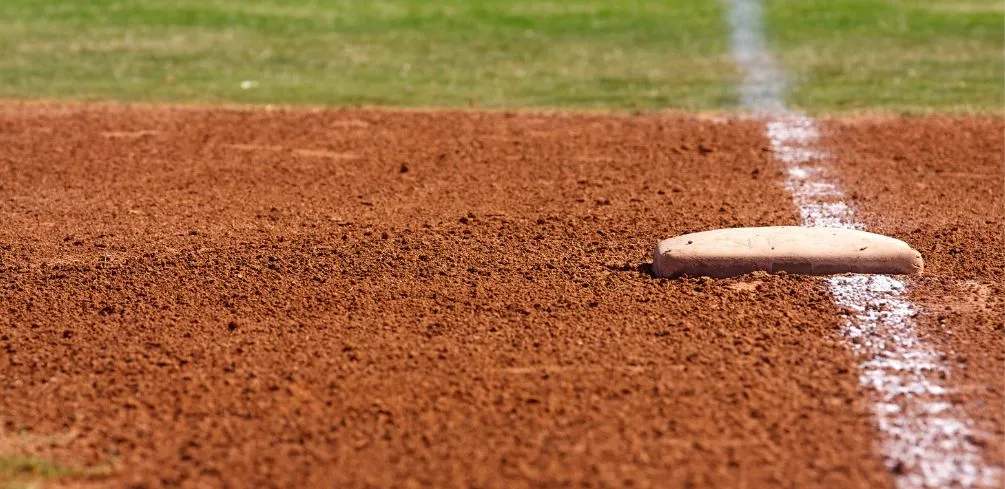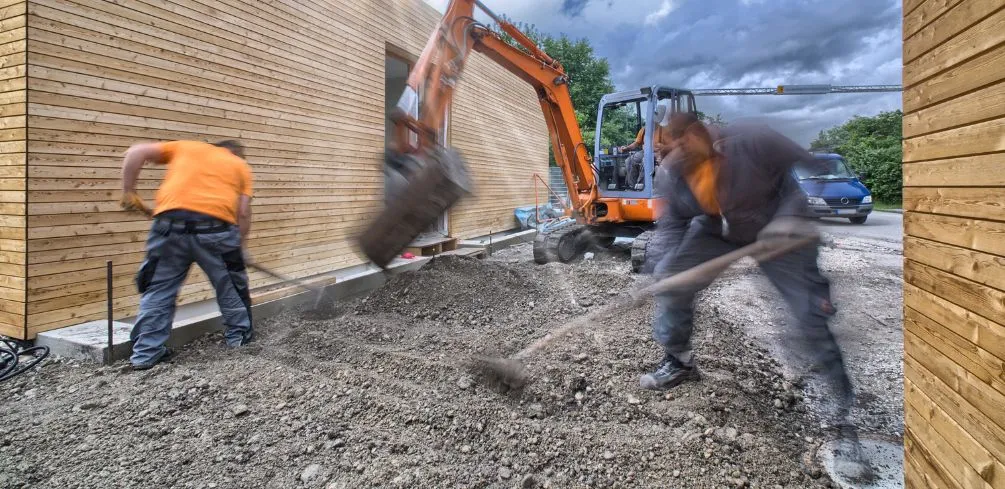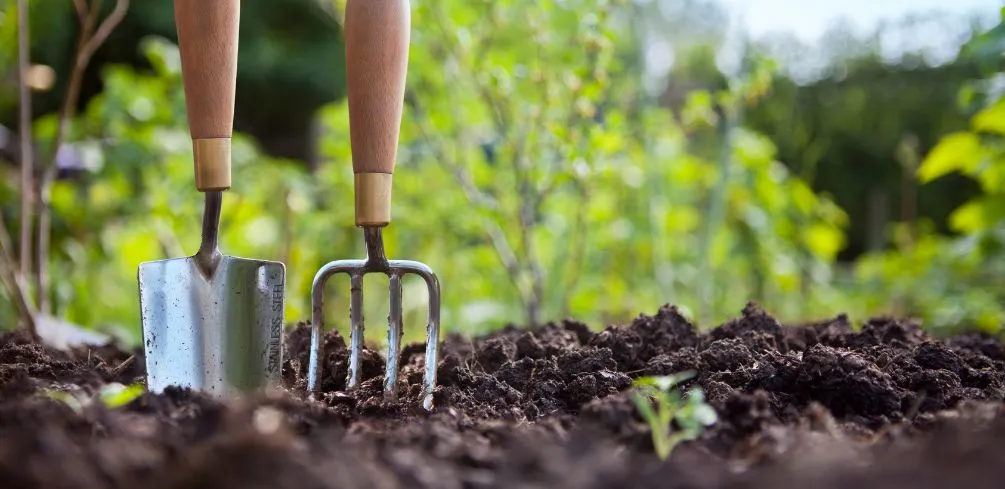Landscaping with dirt is a natural and cost-effective way to create a beautiful outdoor environment. Dirt is abundant and readily available, making it an accessible resource for individuals looking to enhance their landscape design.
With creativity and ingenuity, landscaping with dirt can transform any space into a lush and inviting oasis.
In recent years, there has been a growing interest in sustainable and eco-friendly landscaping practices. Landscaping with dirt aligns well with these principles as it requires minimal resources and reduces waste.
It also allows for the incorporation of native plants that thrive in local soil conditions, further promoting ecological balance.
By utilizing this earthy medium, homeowners can create outdoor spaces that not only look stunning but are also environmentally conscious.
In this article, we will explore the benefits of landscaping with dirt and provide tips for incorporating this versatile material into your landscape design.
Benefits Of Using Dirt In Landscaping
Soil composition is one of the most important aspects of landscaping. It determines the success or failure of a landscape project. The right soil composition can provide essential nutrients for plants, improve drainage, and retain moisture.
On the other hand, poor soil quality can lead to erosion and nutrient deficiencies that may harm your plants’ growth.
One of the benefits of using dirt in landscaping is erosion prevention. Erosion is a natural process that can be accelerated by human activities such as construction, deforestation, and improper land use practices. Using dirt in landscaping helps prevent soil erosion by keeping the topsoil intact and providing an anchor for plant roots.
Additionally, dirt absorbs rainwater and slows down its flow, reducing its erosive power. In this way, using dirt in landscaping not only improves soil quality but also helps protect the environment from erosion damage.
Native Plants For Sustainable Landscaping
Using dirt in landscaping has numerous benefits, as discussed in the previous section. However, it is important to use native plants to promote sustainability and ecological balance in the landscape.
Native plants are adapted to the local environment and require less water, fertilizer, and maintenance than non-native plants. They also provide habitat for local wildlife and help support the ecosystem.
One way to incorporate native plants into a landscape is to create a rain garden. A rain garden is a depression in the ground that collects rainwater from roofs, driveways, and other hard surfaces. The water is absorbed by the soil and filtered by plants before it enters a nearby stream or river.
Rain gardens are an effective way to reduce stormwater runoff, which can cause erosion and pollution of waterways. By using native plants in a rain garden, you can create an attractive habitat for pollinators while also protecting the environment.
Benefits of creating a rain garden:
- Reduces stormwater runoff
- Filters pollutants from water
Benefits of using native plants in a rain garden:
- Provides habitat for pollinators
- Low-maintenance option for landscaping
- Helps to restore and maintain local ecosystems.
Designing With Dirt: Tips And Tricks
Designing with dirt is a creative process that involves using this natural element in innovative ways to create beautiful and unique landscapes.
The use of dirt in landscaping has been underestimated for too long, but it provides an array of benefits, such as improving soil structure and aiding in water retention. It is a versatile medium that can be used to create hills, mounds, and berms that add layers of depth to any garden.
With the right techniques, dirt can be transformed into an artistic tool for landscape design. Incorporating texture is key when using dirt creatively in landscaping.
Texture can be achieved by mixing different types of soils or by adding organic matter such as mulch or compost. This adds visual interest and gives the landscape a more natural look.
Additionally, incorporating plants that thrive in the type of soil, you have will enhance the overall aesthetic appeal of your garden.
Designing with dirt requires imagination and skill, but with practice and experimentation, one can achieve stunning results that will leave a lasting impression on anyone who sees it.
Maintenance And Care For Dirt Landscapes
Designing with dirt is just the first step in creating a beautiful and functional landscape. Once the design is complete, it’s important to focus on proper maintenance and care to ensure its longevity.
Mulching techniques can help retain moisture, regulate soil temperature, and suppress weed growth. Applying a layer of mulch around plants and trees can also improve soil structure and fertility over time.
Erosion control strategies are also crucial for maintaining a healthy dirt landscape. Planting ground cover or installing retaining walls can help prevent soil erosion caused by heavy rainfall or wind. Proper drainage systems should also be installed to redirect water away from areas prone to erosion.
By implementing these techniques, you can ensure that your dirt landscape remains healthy and beautiful for years to come.
Cost-Effective Solutions For Your Outdoor Space
Like a painter with a blank canvas, creating an outdoor space that reflects your personality, style, and budget can be daunting. Fortunately, cost-effective solutions exist for transforming your outdoor space into a personal paradise.
DIY projects offer a creative outlet while providing an opportunity to save money on landscaping. One of the easiest and most affordable ways to create a stunning outdoor space is through the use of dirt. By incorporating dirt as a primary component in your landscape design, you can add depth and texture to your yard while keeping costs low.
With some creativity and effort, you can transform an ordinary backyard into an oasis that reflects your unique style. Consider using dirt to build raised garden beds or terraced landscapes.
Alternatively, use it to create a natural-looking pathway or retaining wall. The possibilities are endless when it comes to incorporating dirt into your landscape design.
In addition to using dirt, there are numerous other cost-effective solutions for transforming your outdoor space. DIY projects such as building a fire pit or installing solar-powered lighting can add ambiance and functionality without breaking the bank.
With some creativity and effort, you can create an outdoor space that is both beautiful and practical. Whether you’re looking for ways to save money or simply enjoy getting your hands dirty, there are countless opportunities for creating a stunning outdoor space on a budget. So go ahead – get creative!
Frequently Asked Questions
How Do I Choose The Right Type Of Dirt For My Landscaping Project?
Selecting the appropriate type of soil for a landscaping project involves considering different textures and nutrient content. One must also take into account cost-effective options and sustainable sourcing.
It is important to note that certain plants thrive better in specific types of soil, and thus, it is crucial to match the soil with the plants you intend to use.
By doing so, you can optimize the growth and health of your plants while reducing costs.
Additionally, using sustainable sources of soil can reduce environmental harm while still providing high-quality soil for your landscaping needs.
Taking these factors into consideration ensures that you make an informed decision when selecting soil for your landscaping project.
Can I Use Dirt From My Backyard For My Landscaping Project?
Is it possible to use dirt from your backyard for your landscaping project?
Before using any soil for your landscaping, it is important to conduct a soil test to determine its quality. Soil testing helps in identifying potential issues such as nutrient deficiencies, pH levels, and contaminants that may negatively impact plant growth.
In addition to soil testing, proper soil preparation is crucial for successful landscaping. This includes removing rocks and debris, tilling the soil, and adding organic matter such as compost or peat moss.
By taking these steps, you can ensure that the dirt used in your landscaping project will provide a healthy environment for your plants to thrive.
What Are Some Common Mistakes To Avoid When Using Dirt In Landscaping?
When it comes to landscaping, there are a few common mistakes that people tend to make when using dirt. Choosing plants that are not suited for the soil type can lead to poor growth and eventual death.
It’s important to consider drainage solutions as well, as excess water can cause issues with erosion and plant health. Maintaining soil health is also crucial, which can be done through proper fertilization and watering techniques.
Mulching techniques can also help retain moisture in the soil while preventing weed growth. By avoiding these mistakes and implementing proper techniques, you can achieve a successful and thriving landscaping project.
How Can I Prevent Erosion And Soil Compaction In My Dirt Landscape?
Preventing erosion and soil compaction in a landscape can seem like a daunting task, but with proper mulching techniques and retaining walls, it can be easily achieved.
Mulching helps to retain moisture in the soil, reducing the likelihood of erosion caused by heavy rainfall or wind.
Retaining walls provide structural support to prevent soil from shifting or compacting due to foot traffic or other external factors.
Additionally, incorporating a variety of plant species into the landscape can also help to prevent erosion by establishing strong root systems that hold onto the soil.
By implementing these strategies, one can effectively protect their landscape from erosion and soil compaction for years to come.
Are There Any Environmental Concerns Or Regulations To Consider When Using Dirt In Landscaping?
When incorporating dirt in landscaping, it is important to consider the various environmental regulations and sustainability practices that come into play. These regulations ensure that any landscaping activity does not harm the environment or contribute to climate change.
Additionally, sustainability practices such as using organic fertilizers and minimizing water usage can help reduce the ecological footprint of landscaping activities.
Therefore, before embarking on any landscaping project, it is crucial to conduct thorough research on the applicable environmental regulations and sustainable practices to ensure that your actions do not have a negative impact on the environment.
Conclusion
Landscaping with dirt can be a cost-effective and eco-friendly way to enhance your outdoor space. Selecting the right type of dirt is crucial for ensuring the success of your project. Factors such as soil texture, pH levels, and drainage capacity should be considered when choosing the appropriate dirt.
Using dirt from your backyard may seem like a convenient option, but it’s important to test it first to ensure it meets the necessary requirements.
When using dirt in landscaping, there are some common mistakes to avoid, such as over-compacting or not providing proper drainage. Erosion can also be a concern, so incorporating plants and other materials that aid in water retention can help prevent this issue.
It’s essential to choose the right type of dirt for your project while avoiding common mistakes and complying with environmental regulations. By taking these steps, you can achieve an aesthetically pleasing landscape while minimizing the impact on the environment.
